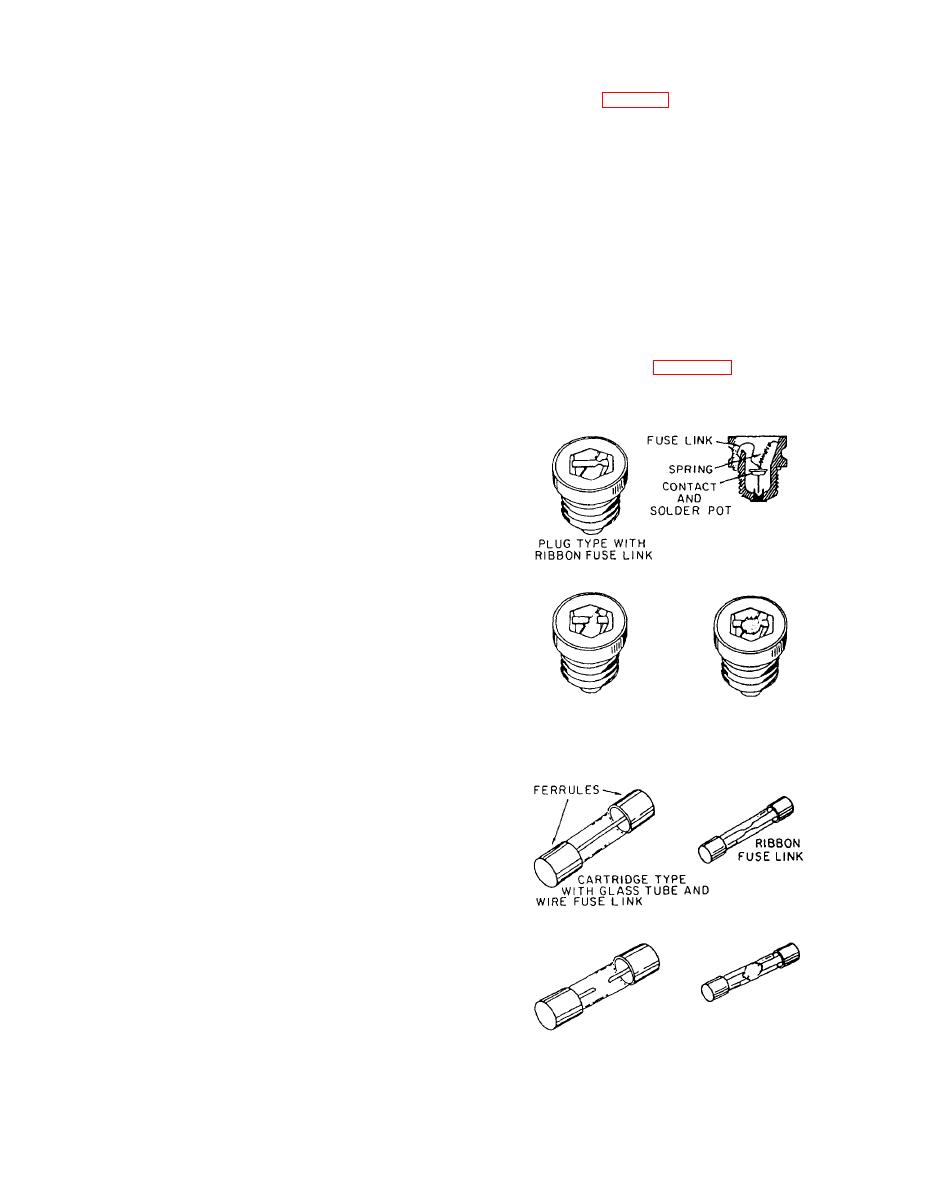 |
|||
|
|
|||
| ||||||||||
|
|
 The plunger should be checked for cleanliness,
Plug Fuses
binding, mechanical failure, and improper alignment
A plug fuse (fig. 2-29) has a piece of zinc-alloy
adjustment. The mechanism that the solenoid is to
wire mounted in a porcelain cup with a metal cover.
actuate should also be checked for proper operation.
A threaded contact base similar to a lamp socket is
The second step should be to check the energizing
provided so that the fuse can be screwed into a socket
voltage by use of a voltmeter. If this voltage is too low,
i n the fuse block. Plug fuses are used on
the result would be less current flowing through the
small-capacity circuits ranging from 3 to 30 amperes
coil and thereby a weak magnetic field. A weak
at not more than 250 volts. Some plug fuses have small
mica windows so the fusible link can be observed.
magnetic field can result in slow, ineffective
Plug fuses are not normally used in naval vessels and
operation. It could also possibly result in chatter or
are seldom used in commercial applications; however,
inoperation. If the energizing voltage is too high, it
they can be found in older buildings and houses.
will in all probability damage the solenoid by either
overheating or arcing. In either case, the voltage
Cartridge Fuses
should be reset to the proper value so further damage
or failure will not result.
A cartridge fuse (fig. 2-30) consists of a
zinc-alloy link enclosed in a fiber, plastic, ceramic, or
The solenoid should then be checked for opens,
shorts, grounds, and correct resistance with an
ohmmeter. If when you check the resistance of the
solenoid the ohmmeter indicates infinity, the solenoid
is open-circuited and should be replaced. If the
ohmmeter reads zero or less than the specified
resistance, the coil is shorted and should be replaced.
However, if the resistance of the coil is higher than
specified (but not infinity), look for a poor contact or
a damaged conductor. If the fault cannot be found or
corrected, replace the solenoid. Another check
possible with the ohmmeter is to determine if the coil
is grounded. If the coil is grounded, reinsulate the
solenoid.
Most protective devices are designed to interrupt
the power to a circuit or unit under abnormal
conditions, such as short circuits, overloads, high or
low voltage, and excessive current. The most common
types of protective devices are fuses, circuit breakers,
and overload relays.
FUSES
A fuse is a protective device used to open an
electric circuit when the current flow exceeds a safe
value. Fuses are made in many styles and sizes for
different voltages and currents, but they all operate on
the same general principle. Each fuse contains a
soft-metal link that melts and opens the circuit when
overheated by excessive currents.
Figure 2-30.-Cartridge fuse.
|
|
Privacy Statement - Press Release - Copyright Information. - Contact Us |